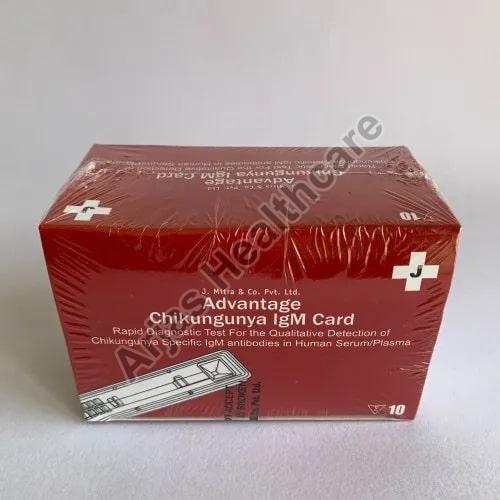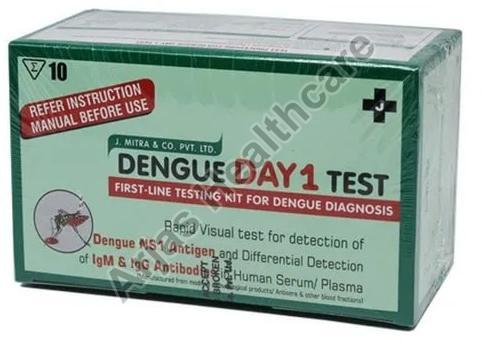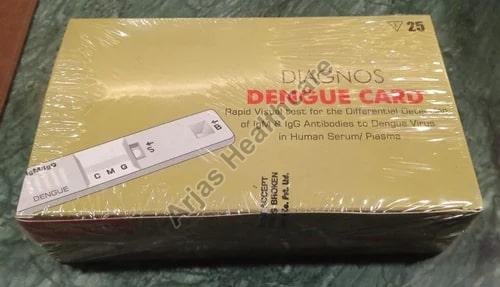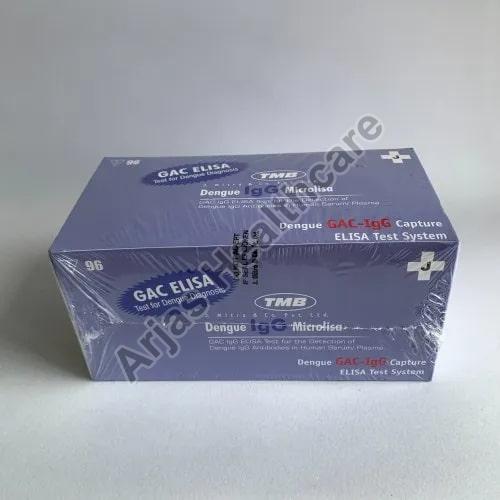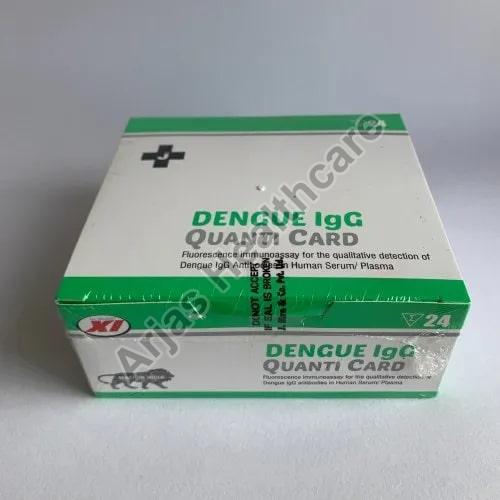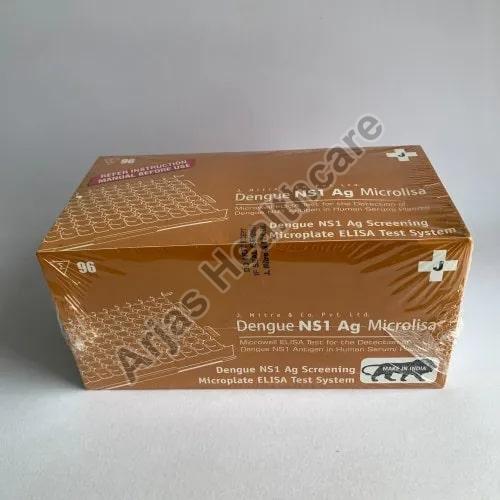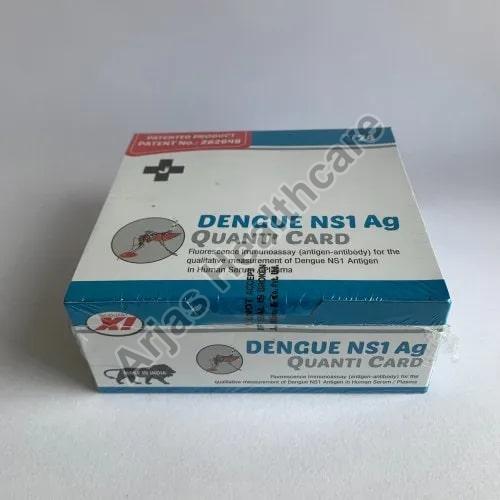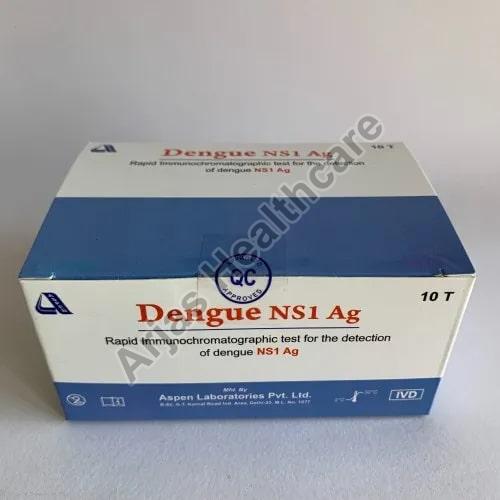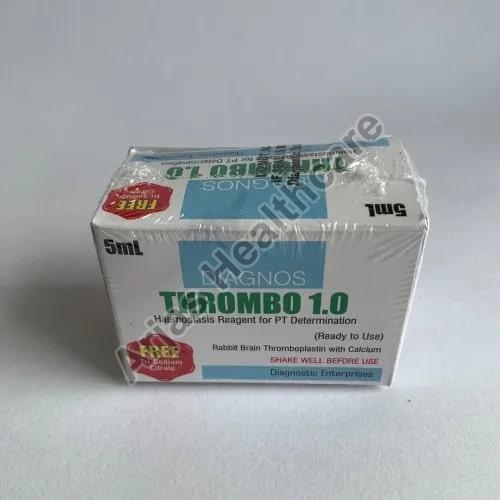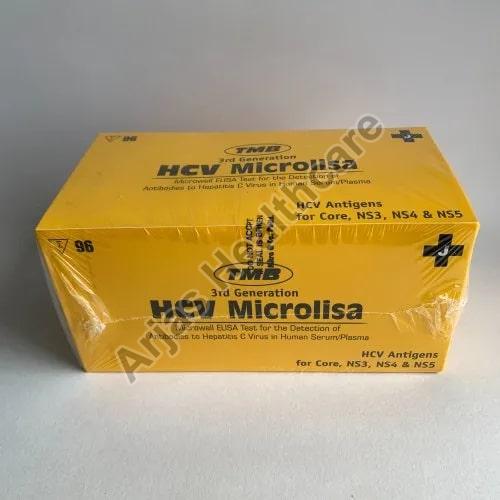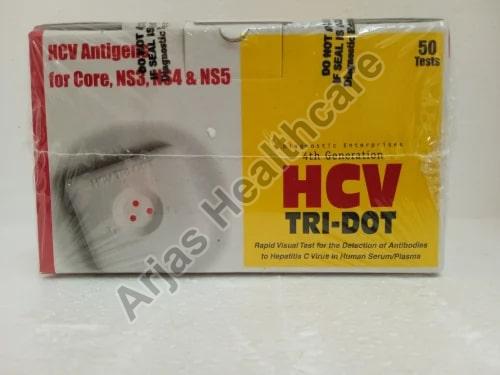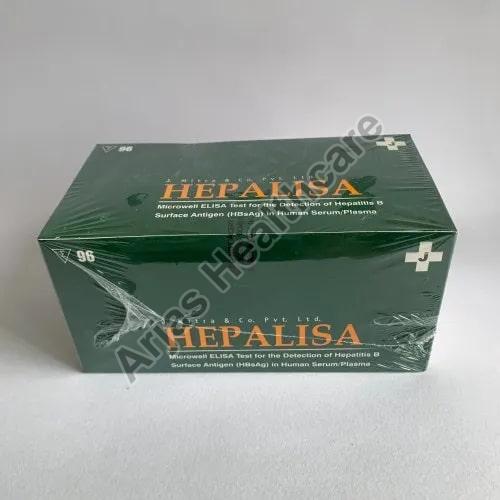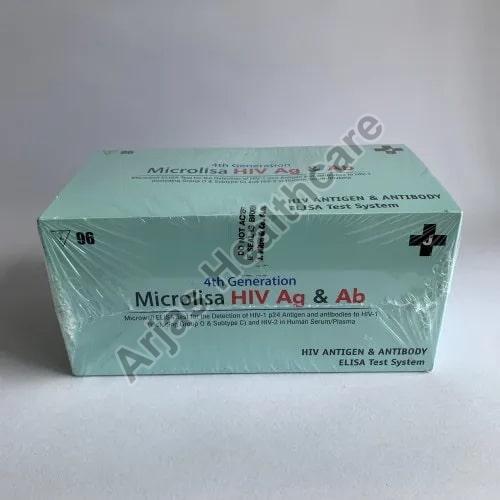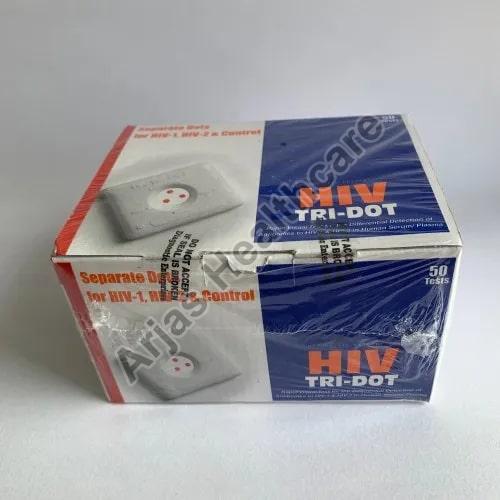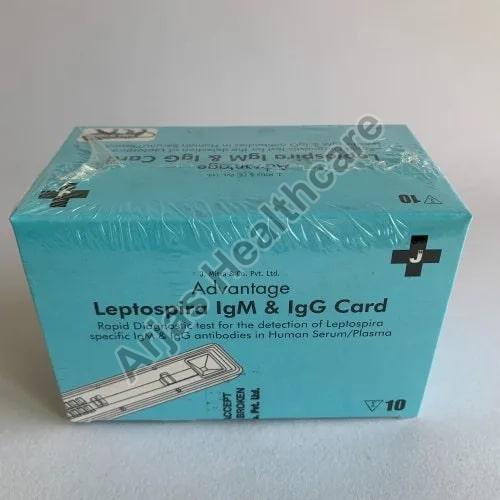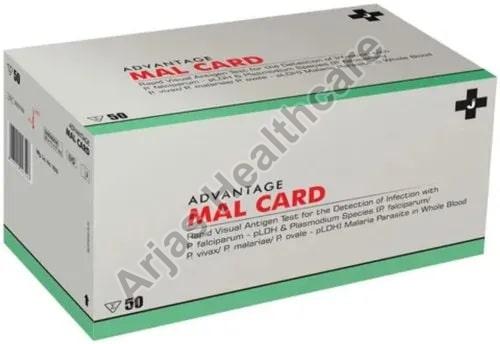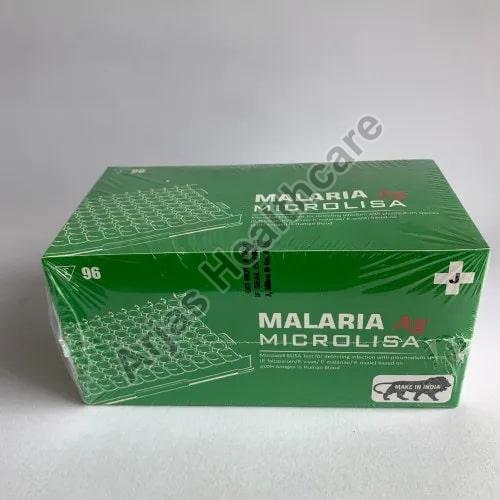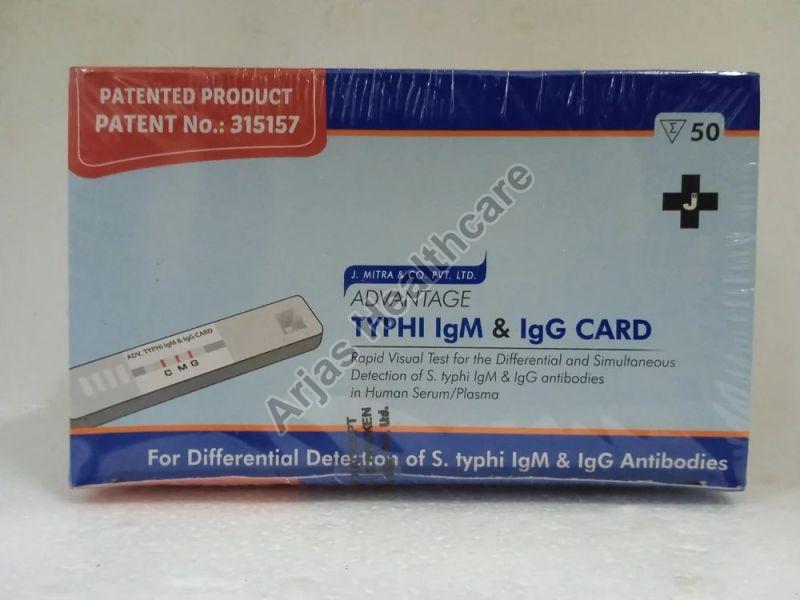Sadashiv Peth, Pune, Maharashtra
- GST NO. : 27AATFA5501D1ZN
J. Mitra Products
Leading Wholesaler and Trader of J. Mitra Chikungunya IgM Card, J. Mitra Dengue Day 1 Combo Kit, J. Mitra Dengue IGG IGM Card, J. Mitra Dengue IGG Microlisa Kit, J. Mitra Dengue IgG Quanti Card, J. Mitra Dengue NS1 Ag Microlisa Kit, J. Mitra Dengue NS1 Ag Quanti Card, J. Mitra Dengue NS1 Quanti Card, J. Mitra Diagnos Thrombo 1.0 Kit, J. Mitra HCV Microlisa 3rd Generation Kit, J. Mitra HCV Tri-Dot Test Kit, J. Mitra Hepacard, J. Mitra Hepalisa Elisa 3rd Generation Kit, J. Mitra HIV Microlisa 4th Generation Kit, J. Mitra HIV Tri-Dot Kit, J. Mitra Leptospira IGM IgG Card, J. Mitra Malaria Card PFPV, J. Mitra Malaria Microlisa Kit and J. Mitra Typhi IgM IgG Card from Pune.
| Business Type | Supplier, Trader |
| Country of Origin | India |
| Manufactured By | J. Mitra |
| Result Time (rapid Kits) | 15 Minutes. |
| Sensitivity | 97.5% |
| Specificity | 99.1% |
| Grade | EN ISO 15223-1:2016. |
| Packaging Size | 10 Pcs. |
| GST | 12% |
Preferred Buyer From
| Location | Anywhere in India |
Chikungunya virus (CHIKV) is an insect-borne virus, of the genus Alphavirus, that is transmitted to humans by virus-carrying Aedes mosquitoes. There have been recent breakouts of CHIKV associated with severe illness. CHIKV causes an illness with symptoms similar to dengue fever. CHIKV manifests itself with an acute febrile phase of the illness lasting only two to five days, followed by a prolonged arthralgic disease that affects the joints of the extremities. The pain associated with CHIKV infection of the joints persists for weeks or months, or in some cases years. As clinical symptoms & signs of this infection resemble those of many other infectious diseases including Dengue fever, clinical findings need to be confirmed by laboratory diagnostic techniques.
Advantage chikungunya igm card is one step immunochromatographic assay. The test sample is introduced to and flows laterally through an absorbent pad where it mixes with the conjugate. If the sample contains Chikungunya specific IgM antibodies, it forms a complex with the chikungunya antigen gold colloid conjugate. The complex then migrates through the nitrocellulose membrane by caplillary action. When the complex meets the line of immobilized Antihuman IgM antibodies (Test line, ‘T’), it generates a pink purple line, indicating that the sample is reactive. To serve as a procedural control, an additional control line ‘C’ has been immobilized at a distance from the test line on the strip. If the test is performed correctly, this will result in the formation of a pinkish-purple line at the control region upon contact with the conjugate.
| Business Type | Supplier, Trader |
| Country of Origin | India |
| Manufacturered By | J MItra |
| Result Time (Rapid Kits) | 20 Minutes |
| Sensitivity | 96% |
| Specificity | 98% |
| Packaging Size | 10 Pcs. |
| Storage Condition | Store at 2 Degree Celsius to 30 Degree Celsius |
| GST | 12% |
Preferred Buyer From
| Location | Anywhere in India |
Dengue virus is a flavivirus found largely in areas of the tropic and sub-tropics. There are four distinct but antigenically related serotypes of dengue viruses, and transmission is by mosquito, principally Aedes aegypti and Aedes albopictus. The mosquito-borne dengue viruses (serotype 1-4) cause dengue fever, a severe flu-like illness. The disease is prevalent in third world tropical regions and spreading to sub-tropical developed countries - including the United States. WHO estimates that 50-80 million cases of dengue fever occur worldwide each year, including a potentially deadly form of the disease called dengue hemorrhagic fever (DHF) and dengue shock syndrome (DSS). Primary infection with dengue virus results in a self-limiting disease characterized by mild to high fever lasting 3 to 7 days, severe headache with pain behind the eyes, muscle and joint pain, rash and vomiting. Secondary infection is the more common form of the disease in many parts of Southeast Asia and South America. IgM antibodies are not detectable until 5-10 days in case of primary dengue infection and until 4-5 days in secondary infection after the onset of illness. IgG appear after 14 days and persist for life in case of primary infection and rise within 1-2 days after the onset of symptoms in secondary infection. This form of the disease is more serious and can result in DHF and DSS. The major clinical symptoms can include high fever, hemorrhagic events, and circulatory failure, and the fatality rate can be as high as 40%. Early diagnosis of DSS is particularly important, as patients may die within 12 to 24 hours if appropriate treatment is not administered. Primary dengue virus infection is characterized by elevations in specific NS1 antigen levels 0 to 9 days after the onset of symptoms; this generally persists upto 15 days. Earlier diagnosis of Dengue reduces risk of complication such as DHF or DSS, especially in countries where dengue is endemic.
Intended useDengue Day 1 Test is a rapid solid phase immuno- chromatographic test for the qualitative detection of Dengue NS1 Antigen and differential detection of IgM and IgG antibodies to dengue virus in human serum / plasma. This test is for in vitro diagnostic use only and is intended as an aid to an early diagnosis of dengue infection & presumptive diagnosis between primary and secondary dengue infection.
Principle (antigen-antibody reaction)
Dengue Day 1 Test kit consists two devices; one device for detection of Dengue NS1 antigen and second device for the differential detection of Dengue IgM/ IgG antibodies in human serum/ plasma. Dengue NS1 antigen device contains two lines; “C” (Control Line) & “T” (Dengue NS1 Antigen detection Test Line). Test line is coated with antibodies, anti-dengue NS1 Ag. When a sample is added to the device, Dengue NS1 antigen if present in the sample will bind to the anti-dengue NS1 gold colloid conjugate making antigen antibodies complex. This complex migrates along the membrane to the test region and forms the visible pink line at “T” as antibody-antigen-antibody gold conjugate complex. Dengue IgM/IgG test device contains three lines; “C” (Control line), “M” (IgM test line) & “G” (IgG test line). IgM test line is coated with anti-human IgM monoclonal antibodies and IgG test line is coated with anti-human IgG monoclonal antibodies. When a sample is added to the device, IgM and IgG antibodies in the sample react with anti-human IgM or IgG antibodies coated on the membrane respectively.
| Business Type | Supplier, Trader |
| Type | Disposable |
| Country of Origin | India |
| Application | Hospital |
| Manufactured By | J. Mitra |
| Size | Standard |
| GST | 12% |
Preferred Buyer From
| Location | Anywhere in India |
| Business Type | Supplier, Trader |
| Country of Origin | India |
| Manufactured By | J. Mitra |
| Calibration Factor | 0.7 |
| Storage Condition | Store at room temperature (20-30 Degree Celsius) |
| Sensitivity | 98.66% |
| Application | GAC- ELISA Test for the Detection of Dengue IgG Antibodies in Human Serum/Plasma |
| Packaging Size | 96 Test |
| GST | 5% |
Preferred Buyer From
| Location | Anywhere in India |
The mosquito-borne dengue viruses (serotype 1-4) cause dengue fever, a severe flu-like illness. The disease is prevalent in third world tropical regions and spreading to sub-tropical developed countries - including the United States. WHO estimates that 50-80 million cases of dengue fever occur worldwide each year, including a potentially deadly form of the disease called dengue hemorrhagic fever (DHF) and dengue shock syndrome (DSS). Primary infection with dengue virus results in a self-limiting disease characterized by mild to high fever lasting 3 to 7 days, severe headache with pain behind the eyes, muscle and joint pain, rash and vomiting. Secondary infection is the more common form of the disease in many parts of Southeast Asia and South America. This form of the disease is more serious and can result in DHF and DSS. The major clinical symptoms can include high fever, haemorrhagic events, and circulatory failure, and the fatality rate can be as high as 40%. Early diagnosis of DSS is particularly important, as patients may die within 12 to 24 hours if appropriate treatment is not administered. Primary dengue virus infection is characterized by elevations in specific IgM antibody levels 3 to 5 days after the onset of symptoms; this generally persists for 30 to 60 days. IgG levels also become elevated after 10 to 14 days and remain detectable for life. During secondary infection, IgM levels generally rise more slowly and reach lower levels than in primary infection, while IgG levels rise rapidly from 1 to 2 days after the onset of symptoms.
Intended use
Dengue IgG Microlisa is designed for in-vitro qualitative detection of Dengue IgG Antibodies in human serum or plasma and is used as a screening test for testing of collected blood samples suspected for DENGUE. The kit detects all four subtypes; DEN1, DEN2, DEN3 & DEN4 of Dengue Virus.
Principle
DENGUE IgG MICROLISA test is an enzyme immunoassay based on “GAC-Capture ELISA”. Anti-human IgG antibodies are coated onto microtiter wells. Specimens and controls are added to the microtiter wells and incubated. Antibodies to Dengue if present in the specimen, will bind to the Anti-human IgG antibodies adsorbed onto the surface of the wells. The plate is then washed to remove unbound material. Horseradish peroxidase (HRPO) conjugated dengue antigen (DEN1-4) is added to each well. This dengue antigen conjugate will bind to Dengue specific IgG antibodies which is complexed with anti- human IgG antibodies. Finally substrate solution containing chromogen and hydrogen peroxide is added to the wells and incubated. A blue colour will develop in proportion to the amount of Dengue antibodies present in the specimen. The colour reaction is stopped by a stop solution. The enzyme substrate reaction is read by EIA reader for absorbance at a wavelength of 450 nm. If the sample does not contain Dengue IgG antibodies then enzyme conjugate will not bind and the solution in the wells will be either colourless or only a faint background colour develops.
Description of symbols used
The following are graphical symbols used in or found on J. Mitra diagnostic products and packing. These symbols are the most common ones appearing on medical devices and their packing. They are explained in more detail in the British and European Standard EN ISO 15223-1:2016.
| Business Type | Supplier, Trader |
| Country of Origin | India |
| Manufactured BY | J Mitra |
| Result Time (Rapid Kits) | 40 Minutes |
| Shelf Life | 15 Months |
| Packaging Size | 24 Tests |
| Application | Detection of all 4 Serotypes of Dengue Virus. |
| Sensitivity | 96.72% |
| Specificity | 97.45%. |
| GST | 5% |
Preferred Buyer From
| Location | Anywhere in India |
Dengue IgM Quanti Card is a sensitive immuno- chromatographic test for the qualitative detection of dengue IgM antibodies in human Serum/ Plasma with iQuant Analyzer . This test is for in vitro diagnostic use only and is intended as an aid in the diagnosis of dengue infection.Dengue IgM Quanti Card is a fluorescence immunoassay. The test area is coated with dengue antigen (1-4). When a sample is added to the device, dengue IgM antibodies in the sample react with anti-human IgM antibodies complex to flourescent dye in the conjugate. On addition of Assay Buffer, this complex migrates along the nitrocellulose membrane to the test region and forms an antibody-antigen-antibody fluorescence immunocomplex. The result will be displayed by iQuant Analyzer.
| Business Type | Supplier, Trader |
| Country of Origin | India |
| Manufactured By | J Mitra |
| Specificity | 100% |
| Application | Microwell ELISA Test for the Detection of Dengue NS1 Antigen in Human Serum/Plasma |
| Packaging Size | 96 Test |
| Storage Condition | Store the kit & its components at 2-8 Degree Celsius |
| Sensitivity | 99.5% |
| GST | 5% |
Preferred Buyer From
| Location | Anywhere in India |
1. Introduction
Dengue virus is a flavivirus found largely in areas of the tropic and sub-tropics. There are four distinct but antigenically related serotypes of dengue viruses, and transmission is by mosquito, prinicipally Aedes aegypti and Aedes albopictus. The mosquito-borne dengue viruses (serotype 1-4) cause dengue fever, a severe flu-like illness. The disease is prevalent in third world tropical regions and spreading to subtropical developed countries - including the United States. WHO estimates that 50-80 million cases of dengue fever occur worldwide each year, including a potentially deadly form of the disease called dengue haemorrhagic fever (DHF) and dengue shock syndrome (DSS). Primary infection with dengue virus results in a self-limiting disease characterized by mild to high fever lasting 3 to 7 days, severe headache with pain behind the eyes, muscle and joint pain, rash and vomiting. Secondry infection is the more common form of the disease in many parts of Southeast Asia and South America. This form of the disease is more serious and can result in DHF and DSS. The major clinical symptoms can include high fever, haemorrhagic evets, and circulatory failure, and the fatality rate can be as high as 40%. Early diagnosis of DSS is particularly important, as patients may die within 12 to 24 hours if appropriate treatment is not administered. Primary dengue virus infection is characterized by elevations in specific NS1 antigen levels 0 to 9 days after the onset of symptoms; this generally persists upto 15 days. Earlier diagnosis of Dengue reduces risk of complication such as DHF or DSS, especially in countries where dengue is endemic.
2. Intended use
DENGUE NS1 Ag MICROLISA is designed for in vitro qualitative detection of Dengue NS1 antigen in human serum or plasma and is used as a screening test for testing of collected blood samples suspected for DENGUE. The kit detects all four subtypes; DEN1, DEN2, DEN3 & DEN4 of Dengue Virus.
3. Principle
Dengue ns1 ag microlisa is a solid phase enzyme linked immunosorbent assay (ELISA) based on the “Direct Sandwich” principle. The microwells are coated with Antidengue NS1antibodies with high reactivity for Dengue NS1 Ag. The samples are added in the wells followed by addition of enzyme conjugate (monoclonal anti-dengue NS1 antibodies linked to Horseradish Peroxidase (HRPO)). A sandwich complex is formed in the well wherein dengue NS1 (from serum sample) is “trapped” or “sandwiched” between the antibody and antibody HRPO conjugate. Unbound conjugate is then washed off with wash buffer. The amount of bound peroxidase is proportional to the concentration of dengue NS1 antigen present in the sample. Upon addition of the substrate buffer and chromogen, a blue colour develops. The intensity of developed blue colour is proportional to the concentration of dengue NS1 antigen in sample. To limit the enzyme-substrate reaction, stop solution is added and a yellow colour develops which is finally read at 450nm spectrophotometrically.
4. Description of symbols used
The following are graphical symbols used in or found on J. Mitra diagnostic products and packing. These symbols are the most common ones appearing on medical devices and their packing. They are explained in more detail in the British and European Standard EN ISO 15223-1:2016.
| Business Type | Supplier, Trader |
| Country of Origin | India |
| Manufactured By | J Mitra |
| Packaging Size | 24 Test |
| Application | Fluorescence immunoassay (antigen-antibody) for qualitative detection of Dengue NS1 Antigen in Human |
| Standards | EN ISO 15223-1:2016. |
| Storage Condition | Store at 2 Degree Celsius to 8 Degree Celsius |
| Sensitivity | 100% |
| Specificity | 99.95% |
| GST | 5% |
Preferred Buyer From
| Location | Anywhere in India |
Dengue virus is a flavivirus found largely in areas of the tropic and sub-tropics. There are four distinct but antigenically related serotypes of dengue viruses, and transmission is by mosquito, prinicipally Aedes aegypti and Aedes albopictus. The mosquito-borne dengue viruses (serotype 1-4) cause dengue fever, a severe flu-like illness. The disease is prevalent in third world tropical regions and spreading to sub-tropical developed countries - including the United States. WHO estimates that 50-80 million cases of dengue fever occur worldwide each year, including a potentially deadly form of the disease called dengue haemorrhagic fever (DHF) and dengue shock syndrome (DSS). Primary infection with dengue virus results in a self-limiting disease characterized by mild to high fever lasting 3 to 7 days, severe headache with pain behind the eyes, muscle and joint pain, rash and vomiting. Secondry infection is the more common form of the disease in many parts of Southeast Asia and South America. IgM antibodies are not detectable until 5- 10 days in case of primary dengue infection and until 4-5 days in secondary infection after the onset of illness. IgG appear after 14 days and persist for life in case of primary infection and rise within 1-2 days after the onset of symtoms in secondary infection. This form of the disease is more serious and can result in DHF and DSS. The major clinical symptoms can include high fever, haemorrhagic fever, and circulatory failure, and the fatality rate can be as high as 40%. Early diagnosis of DSS is particularly important, as patients may die within 12 to 24 hours if appropriate treatment is not administered. Primary dengue virus infection is characterized by elevations in specific NS1 antigen levels 0 to 9 days after the onset of symptoms; this generally persists upto 15 days. Earlier diagnosis of Dengue reduces risk of complication such as DHF or DSS, especially in countries where dengue is endemic.
Intended useDengue NS1 Ag Quanti Card is a sensitive immuno- chromatographic test for the qualitative detection of Dengue NS1 Antigen in human Serum/ Plasma with iQuant Analyzer . This test is for in vitro diagnostic use only and is intended as an aid in the earlier diagnosis of dengue infection
Principle (antigen-antibody reaction)
Dengue NS1 Ag Quanti Card is a fluorescence immunoassay based on sandwich principle. The test area is coated with specific anti-dengue NS1 Ag antibodies. When a sample is added to the cartridge, Dengue NS1 antigen if present will form a complex with another specific NS1 antibodies conjugate to fluorochorme. On addition of Assay Buffer, this complex migrates along the nitrocellulose membrane to the test region and forms an antibody-antigen-antibody fluorescence immunocomplex. The result will be displayed by iQuant Analyzer.
| Business Type | Supplier, Trader |
| Country of Origin | India |
| Manufactured By | J Mitra |
| Application | Hospital |
| Type | Disposable |
| GST | 12% |
| Sensitivity | 100% |
| Specificity | 99.95% |
| Standards | EN ISO 15223-1:2016. |
Preferred Buyer From
| Location | Anywhere in India |
| Business Type | Supplier, Trader |
| Country of Origin | India |
| Manufactured By | J Mitra |
| Sample Type | Blood |
| Form | Liquid |
| Pack Size | 5 ml |
| Shelf Life | 1 Year |
| GST | 12% |
Preferred Buyer From
| Location | Anywhere in India |
| Business Type | Supplier, Trader |
| Country of Origin | India |
| Manufactured By | J Mitra |
| Temperature | 2-8 Deg C |
| Sensitivity | 100% |
| Application | Laboratory |
| Result Time | 10 Mint. |
| Shelf Life | 15 Months |
| GST | 5% |
Preferred Buyer From
| Location | Anywhere in India |
| Business Type | Supplier, Trader |
| Application | Hospital |
| Certificate | CE Certified |
| Type | Rapid |
| Country of Origin | India |
| Manufactured By | J. Mitra |
| Number of Reactions(Preps)/Kit | 50 Test |
| GST | 12% |
Preferred Buyer From
| Location | Anywhere in India |
| Business Type | Supplier, Trader |
| Application | Hospital |
| Certificate | CE Certified |
| Type | Disposable |
| Country of Origin | India |
| Manufactured By | J. Mitra |
| GST | 5% |
Preferred Buyer From
| Location | Anywhere in India |
| Business Type | Supplier, Trader |
| Country of Origin | India |
| Manufactured By | J Mitra |
| Sensitivity | 100% |
| Application | Microwell ELISA Test for the Detection of Hepatitis B Surface Antigen (HBsAg) in Human Serum/ Plasma |
| Packaging Size | 96 Test |
| Storage Condition | Store at 2 Degree Celsius to 8 Degree Celsius |
| GST | 5% |
Preferred Buyer From
| Location | Anywhere in India |
1. Introduction
The Viral Hepatitis caused by Hepatitis B Virus is termed as “Serum Hepatitis”. 1-5% infected people act as chronic carriers of HBV Virus. Major part of the chronic carriers secrete hepatitis B surface antigen (HBsAg) into blood and other secretions of the body like saliva and vaginal fluid. These chronic carriers are potentially infectious to other seronegative people. Hepatitis B Virus belongs to a family of enveloped DNA virus, the Hepadnavirus. Related viruses in this group cause chronic hepatitis. HBsAg has been accepted as a universal and the most reliable seromarker in case of acute HBV infection due to its appearance almost 2-4 weeks before the ALT level becomes abnormal and 3-5 weeks before the onset of symptoms or jaundice as an early detection system for hepatitis infection. In most cases of HBV infection, the incubation period varies from 40 days to 6 months. Within HBVs, antigenic diversity is recognised in the surface antigens. HBsAg particles contain common “a” antigen, linked to two sets of mutually exclusive determinants, “d” or “y” and “w” or “r” giving the four main types-adw, adr, ayw and ayr.
2. Intended use
Hepalisa is designed for in-vitro qualitative detection of Hepatitis B surface antigen (HBsAg) in human serum or plasma and is used as a screening test for testing of collected blood prior to transfusion.
3. Serological markers of clinical significance for hepatitis B virus (HBV)
HBsAg : First detected during the incubation period of 6-8 weeks before the appearance of symptoms. It can appear as early as 2 weeks and generally disappears within 3-4 months after exposure. It is the most reliable & universal marker of HBV infection. In the carrier and chronic state it persists more than6 months.
Anti-HBs : Appearance may take several weeks/months after HBsAg clearance causing a ‘window’ period. Best indicator of recovery & immunity to HBV. Quantitation allows pre-vaccination screening & follow-up of the post-vaccination response.
HBeAg : Appears within 1 week after HBsAg, lasts 3-6 weeks & disappears before HBsAg clearance. Its presence indicates a highly infectious state, except in pre-core mutants. Persistence > 10 weeks suggests progression to chronic carrier state/hepatitis.
Anti-HBe : It appears before clearance of HBsAg, indicates decreasing infectivity and is a good prognosis for the resolution of infection.
| Business Type | Supplier, Trader |
| Application | Hospital |
| Country of Origin | India |
| Manufactured By | J. Mitra |
| Result Time (Rapid Kits) | 20 mnt |
| Number of Reactions(Preps)/Kit | 96 |
| Shelf Life | 24 Months |
| GST | 5T |
Preferred Buyer From
| Location | Anywhere in India |
4th Generation Microlisa HIV Ag & Ab Elisa Test for the Detection of HIV-1 p24 Antigen and antibodies to HIV-1 (including Group O & Subtype C) and HIV-2 in Human Serum / Plasma)
| Business Type | Supplier, Trader |
| Country of Origin | India |
| Manufactured By | J Mitra |
| Shelf Life | 15 Months |
| Packaging Size | 50 Test |
| Standard | EN ISO 15223-1:2016. |
| Storage Condition | Store the entire kit at 2-8 Degree Celsius in the coolest and driest area |
| Application | Detection of Antibodies to HIV-1 & HIV-2 in Human Serum/Plasma |
| GST | 5% |
Preferred Buyer From
| Location | Anywhere in India |
I. HIST Orical review and aetiology of aids (acquired immuno deficiency syndrome)
First confirmed case of Aids was identified in 1983 and by 1984 the etiologic agent, the Human Immunodeficiency Virus (HIV), subsequently named HIV-1 was isolated. Shortly afterwards in 1985 another retrovirus subsequently named HIV-2 was isolated in Africa. These two viruses belong to the retrovirus group and are slow viruses. The structure, gene organisation and serological behaviour of HIV-1 & HIV-2 and their complete nucleotide sequence has been determined. This knowledge has laid a foundation for the development of a new assay based on Recombinant DNA technology leading to the differential detection of antibodies to HIV-1 & HIV-2 (if present) in Human Serum or Plasma. Research has shown that antibodies produced against envelope gene are found in infected people as shown in graph, (Fig.-1).
HIV TRI-DOT has been developed and designed using gp41, C terminal of gp120 & gp36 representing the immunodominant regions of HIV-1 & HIV-2 envelope gene structure respectively. The device (an immunofiltration membrane) includes a "Built-in Quality Control DOT" which will develop colour during the test, thereby, confirming proper functioning of the device, reagents and correct procedural application. This Control dot is the "Built-in Quality Control." (Fig.2) HIV TRI-DOT has been specially researched, developed and engineered using several thousands of serum/plasma specimens. It has also been evaluated by UNAIDS (WHO) Geneva, using samples of European, Asian, Latin American & African origin. The Sensitivity and Specificity has been extremely high in these samples of diverse origin. The panel used for evaluation of HIV TRI-DOT by Institute of Tropical Medicine, WHO Collaborating Centre in AIDS, Belgium also included HIV-O Virus, which was found reactive with HIV TRI-DOT.
2. Intended use
The HIV TRI-DOT Test is a visual, rapid, sensitive and accurate immunoassay for the differential detection of HIV-1 & HIV-2 antibodies (IgM, IgG & IgA) in Human Serum or Plasma using HIV-1 & HIV-2 Antigens immobilized on an immunofiltration membrane. The test is a screening test for anti-HIV-1 & antiHIV-2 and is for in vitro diagnostic use only.
3. Description of symbols used
The following are graphical symbols used in or found on J. Mitra diagnostic products and packing. These symbols are the most common ones appearing on medical devices and their packing. They are explained in more detail in the British and European Standard EN ISO 15223-1:2016.
4. Principle of the test
HIV antigens are immobilized on a porous immunofiltration membrane. Sample and reagents pass through the membrane and are absorbed into the underlying absorbent. As the patient''s sample passes through the membrane, HIV antibodies, if present, bind to the immobilized antigens. Conjugate binds to the Fc portion of the HIV antibodies to give distinct pinkish purple DOT(s) against a white background. (Fig.-3)
| Business Type | Supplier, Trader |
| Country of Origin | India |
| Manufactured By | J Mitra |
| Kit Contain | 10 Kits |
| Storage Condition | Stored at 2-30 Degree Celsius in the coolest and driest area available |
| Sensitivity | 98.16% (for IgM Antibodies) & 100% (for IgG Antibodies) |
| Specificity | 99.61% |
| GST | 12% |
Preferred Buyer From
| Location | Anywhere in India |
Rapid Diagnostic test for the detection of Leptospira specific IgM & IgG antibodies in Human Serum/Plasma
Intended useAdvantage Leptospira IgM & IgG Card is a visual, rapid, sensitive, qualitative immnunoassay for the detection of Leptospira specific IgM and IgG antibodies in human serum or plasma.
Introduction
Leptospirosis is a world-wide occuring zoonotic disease, caused by infection with pathogenic spirochetes of the genus Leptospira. Although traditionally considered as an occupational risk among persons exposed to contaminated water or infected animal urine, leptospirosis is becoming recognised as a common cause of febrile illness in tropical environmments world-wide. The organism enters the human body through cuts or abrasions on the skin or through intact mucosa of the mouth, nose or conjunctiva. The clinical manifestations of leptospirosis range from a mild catarrh like fever, chills, nausea, muscle aches to icteric disease such as Weil’s syndrome, which are charaterized by renal failure, liver impairments & haemorrhages and have a high mortality rate. As clinical symptoms & signs of this infection resemble those of many other infectious diseases including Viral haemorrhage fever and Dengue fever, clinical findings need to be confirmed by laboratory diagnostic techniques.
Principle
(Antigen-antibody reaction) Advantage Leptospira IgM & IgG Card is based on immunochromatographic assay principle. The test uses monoclonal anti-human IgM antibody (test line M) and monoclonal anti-human IgG (test line G) immobilised on a nitrocellulose strip. The test sample is introduced to and flows laterally through an absorbent pad where it mixes with the conjugate. The conjugate contains colloidal gold conjugated to leptospira antigen which is prepared from culture of micro-organisms. If the sample contains Leptospira specific IgM and/or IgG antibodies, it forms a complex with the leptospira antigen gold conjugate making antigen antibodies complex. This complex then migrates through the nitrocellulose membrane by caplillary action. When the complex meets the line of immobilized monoclonal antibodies (Test line, ‘M & G’), it generates a red line, indicating that the sample is reactive. A red procedural control line should always develop at ‘C’ region to indicate that the test has been performed properly.
| Business Type | Supplier, Trader |
| Country of Origin | India |
| Manufactured By | Mitra |
| Grade | EN ISO15223-1:2016. |
| Application | Rapid Diagnostic Antigen test kit for detecting infection with P. falciparum and Plasmodium Species |
| Storage Temperature | Stored at 4-30 Degree Celsius in the cool & driest area |
| Shelf Life | 24 Months |
| Packaging Size | 50 Test |
| GST | 12% |
Preferred Buyer From
| Location | Anywhere in India |
Introduction
Malaria is a serious, sometimes fatal, parasitic disease characterized by fever, chills, and anaemia and is caused by a parasite that is transmitted from one human to another by the bite of infected Anopheles mosquitoes. There are four kinds of malaria parasite that can infect human : Plasmodium falciparum, P. vivax, P. ovale, and P. malariae. As per WHO estimation. in 2012, there were an approximately 207 million cases and an estimated 627 000 deaths . Approximately 90% of all malaria deaths occur in sub-Saharan Africa, and 77% occur in children under 5 years. Malaria remains endemic in 104 countries, and, while parasite-based diagnosis is increasing, most suspected cases of malaria are still not properly confirmed, resulting in over-use of antimalarial drugs and poor disease monitoring. The use of antigen detecting rapid diagnostic tests (RDTs) is a vital part of malaria case management forming the basis for extending access to malaria diagnosis.
Intended useAdvantage mal card is a visual, rapid, qualitative and sensitive solid phase immuno chromatographic assay based on antigen detection and is as an aid in the qualitative diagnosis of infection with pLDH (Plasmodium Lactate Dehydrogenase) antigen specific to Plasmodium falciparum and other Plasmodium Species (P. vivax / P. malariae / P. ovale) in human whole blood. The kit is intended for professional use and as a screening test. All reactive samples should be confirmed by a supplental assay like microscopic examination of thick smear and thin blood films. It assists trained competent users in detecting plasmodium infections.
Principle (antigen-antibody reaction)
Advantage mal card is an immunoassay based on the “sandwich” principle. The conjugate contains colloidal gold conjugated to monoclonal anti-pan specific pLDH (Plasmodium Lactate Dehydrogenase) antibody. The test uses monoclonal anti-P.f pLDH antibody (test line F) & monoclonal anti-Pan specific pLDH antibody (test line P) immobilized on a nitrocellulose strip. The test sample is added to the device. On addition of assay buffer, the red blood cells get lysed. If the sample contains P. falciparum and/or P. vivax/P. malariae/P. ovale, the colloidal gold antibody conjugate complexes the P.f. specific pLDH/Pan specific pLDH in the lysed sample. This complex migrates through the nitrocellulose strip by capillary action. When the complex meets the line of the corresponding immobilized monoclonal antibody, the complex is trapped forming a purplish pink band which confirms a reactive test result. Absence of a coloured band in the test region indicates a non-reactive test result. A red procedural control line should always develop at ‘C’ region to indicate that the test has been performed properly.
| Business Type | Supplier, Trader |
| Country of Origin | India |
| Manufactured By | J Mitra |
| Application | Microwell ELISA Test for detecting infection with plasmodium species |
| Standard | EN ISO 15223-1:2016. |
| Storage Condition | Store all components at 2-8 Degree Celsius |
| Packaging Size | 96 Test |
| GST | 5% |
Preferred Buyer From
| Location | Anywhere in India |
Malaria is a serious, sometimes fatal, parasitic disease characterized by fever, chills, and anaemia and is caused by a parasite that is transmitted from one human to another by the bite of infected Anopheles mosquitoes. There are four kinds of malaria parasite that can infect human: Plasmodium falciparum, P. vivax, P. ovale and P. malariae. The disease now occurs in more than 90 countries worldwide, and it is estimated that there are over 500 million clinical cases and 2.7 million malaria-caused deaths per year. At present, malaria is diagnosed microscopically by looking for the parasites in a drop of blood. Malaria Ag Microlisa is a microlwell ELISA test for the diagnosis of infection with all four Plasmodium Species (P. falciparum/P. vivax/ P. malariae/ P. ovale) in human whole blood. Malaria Ag Microlisa is specially designed to exluded infected blood to prevent transfusion aquired malaria and is used to monitoring of anti-malarial theraphy
Intended use
Malaria Ag Microlisa is an in-vitro qualitative enzyme immunoassay for detecting infection with plasmodium species (P. falciparum/P. vivax/ P. malariae/ P. ovale) based on pLDH antigen in human blood. It is intended for screening of blood donors or other individuals at risk for malaria infection and for clinical diagnostic testing
3. Principle of the test
Malaria Ag Microlisa test is an enzyme immunoassay based on sandwich ELISA. Anti-pLDH antibodies has been coated onto the wells of the microwell plate provided. Blood sample including controls are pipetted into these wells. During the first incubation, the plasmodium species pLDH antigen from samples and coated antibody is react and after washing the enzyme conjugate (anti-pLDH antibody HRPO) is added after incubation and washing to remove all the unbounded enzyme conjugate. A substrate solution which acts on the bound enzyme is added to induce a colured reaction product. The intensity of this coloured product is directly proportional to the concentration of pLDH present in the samples
4. Description of symbols used
The following are graphical symbols used in or found on J. Mitra diagnostic products and packing. These symbols are the most common ones appearing on medical devices and their packing. They are explained in more detail in the British and European Standard EN ISO 15223-1:2016.
| Business Type | Supplier, Trader |
| Application | Hospital |
| Type | Disposable |
| Country of Origin | India |
| GST | 12% |
| Size | Standard |
| Manufactured BY | J Mitra |
Preferred Buyer From
| Location | Anywhere in India |


